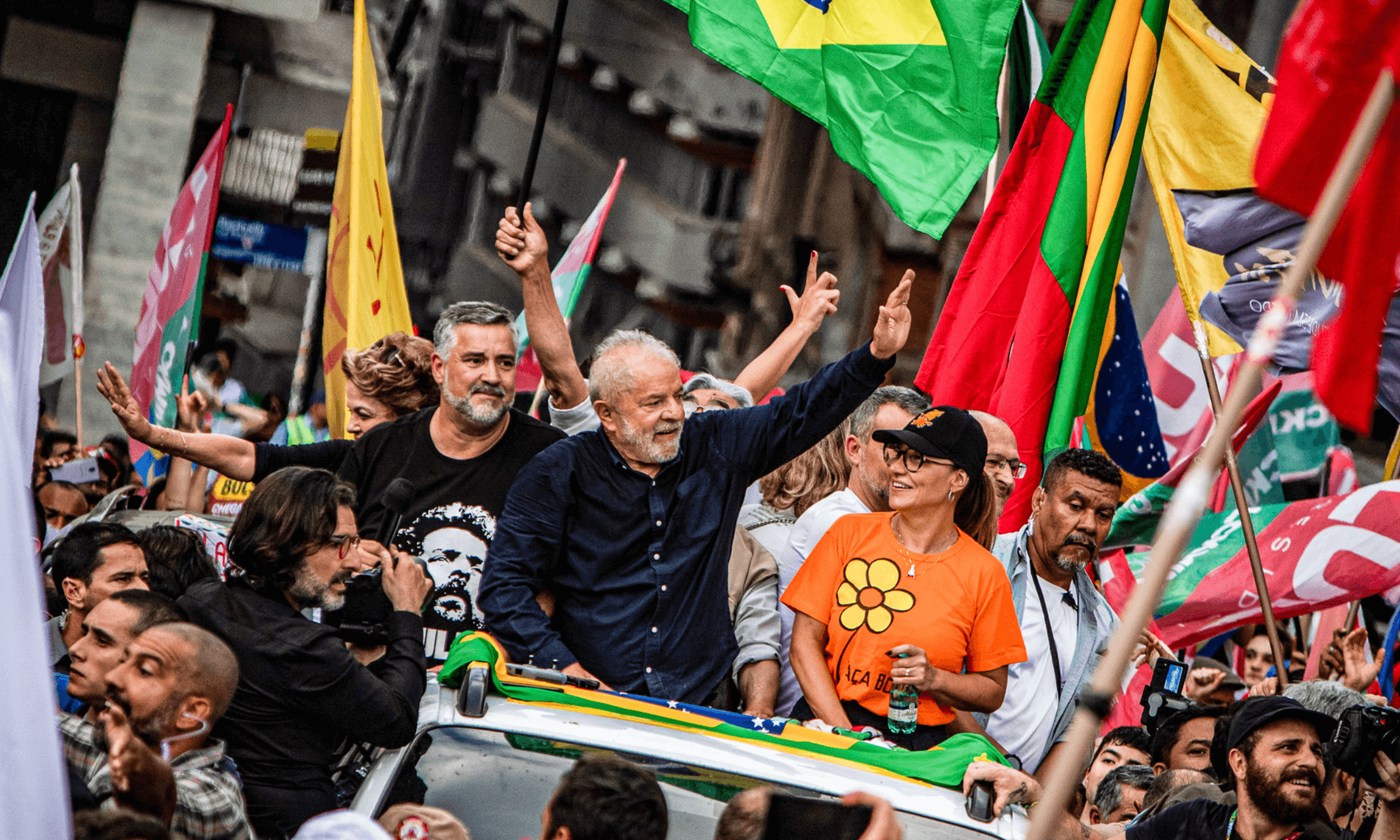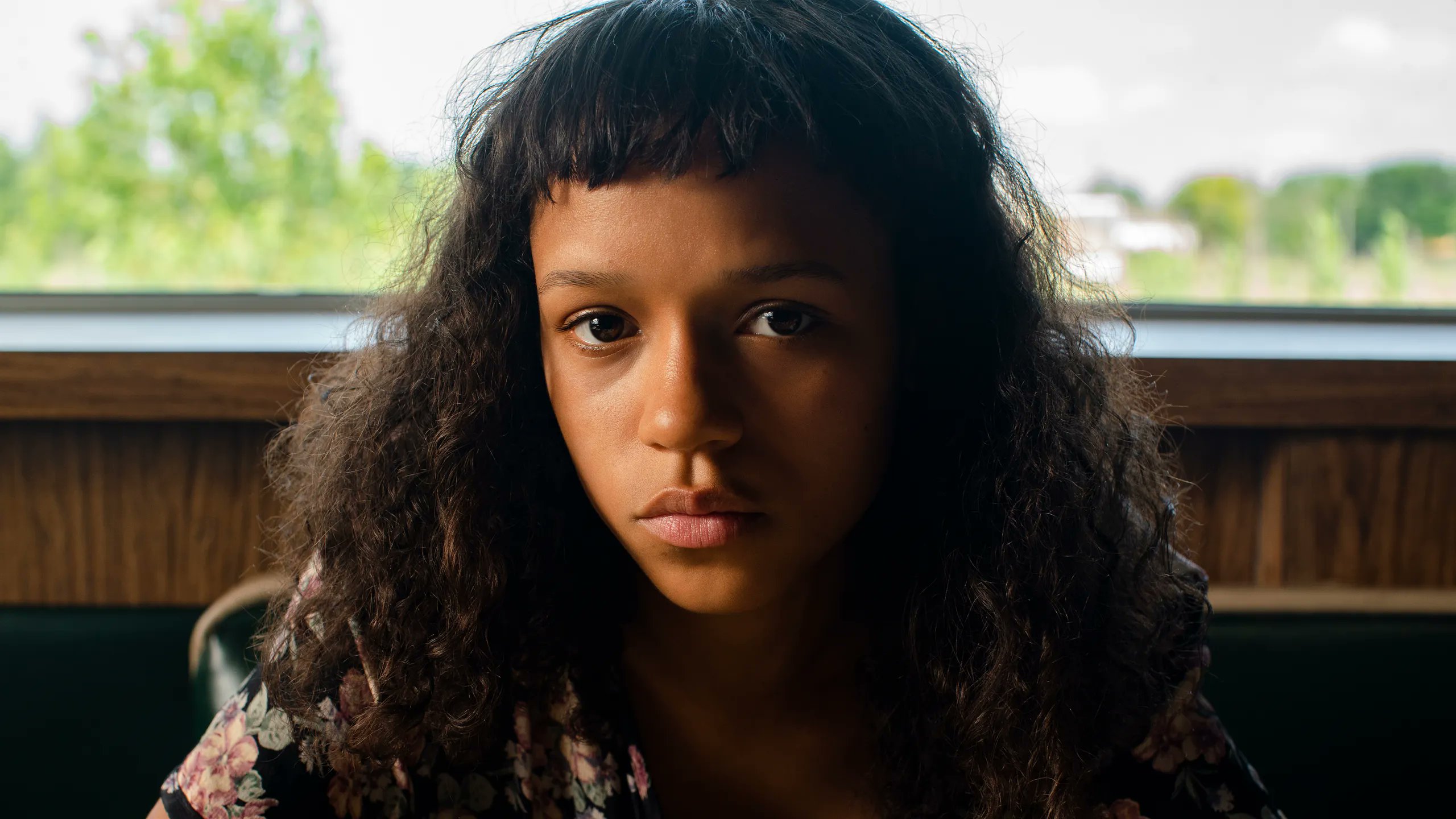
A still courtesy of the Karrabing Film Collective
The indigenous Australian collective using films to expose settlers as stealing c*nts
A beguiling blend of activism and surrealism, these films are an ode to the land that binds them and drag the colonisers that oppress them
Roisin Tapponi
11 Dec 2020
Filmmaking has the power to introduce you to worlds beyond your reach. For over a decade, there has been growing fascination in the Karrabing Film Collective, an indigenous group whose films document what it’s like to be oppressed in southwest Australia’s colonial present. Their storytelling is kaleidoscopic, standing in stark contrast to the dense and bleak genre of political filmmaking.
In Windjarrameru, The Stealing C*Nt$; set in the scrub near Darwin, four indigenous young men are cornered in a radioactive mangrove swamp as they escape the police, having been falsely accused by miners of stealing beer. The drama culminates as nyudj (ancestral spirits) tease the men in a surreal montage sequence, speculating whether beer could be an elaborate plan by the miners to displace indigenous land. “Aba windjarrameru,” the Collective asks, which translates to: “Who are the stealing cunts?” Baked into the story are indigenous worries around environmental destruction, alcoholism, and extractive capitalism.
Similar themes crop up in the Collective’s other films, The Mermaids, or Aiden in Wonderland, which sees European settlers unable to spend long periods of time outdoors due to the destruction of land and sea that has occurred via their lust for capitalism. Recently screened by Home Manchester, each project is a beguiling blend of activism and surrealism, as distinct as the land that binds them.
With the exception of founding member Elizabeth Povinelli, all of the members of the Karrabing Film Collective were born in rural Belyuen, originally a 1940s internment camp, previously named Delissaville. In the Emmiyengal language, Karrabing means “tide out”, a nod to the coastline that connects over 30 intergenerational members who make up the collective. They joined together in 2008, due to violence caused by the Emergency Response intervention, a series of measures drawn up by the Australian government without consultation with Indigenous people. Their films take direct action against political, environmental and economic injustices, such as mining schemes prompted by perragut (white settlers).
To put it bluntly, the Emergency Response intervention is state-sanctioned violence. It enables army troops and police to ambush homes, which in turn increases Indigenous incarceration. Families are pressured to allow mining in their land. The collective aim to expose how this intervention leads to discrimination and oppression. “Filmmaking was something that the cross-generational nature of the extended Karrabing family was drawn towards,” Elizabeth tells me over email, “It allowed for a way of keeping stories strong while passing them down.”
“Mining is the state’s way of recognising capitalist ownership rather than our ways of thinking of our lands,” says the collective, via Povinelli. “Our lands belong to specific families, represented through their totems; they connect us to the ancestral present, our totems shape the lands and us.”
Povinelli’s theoretical concept of “geontology” is central to the narrative and is loosely defined as the struggle to maintain territory under the specific power relations formed by late liberalism. The narrative exists in this web of corruption: the miners want a life that affords boats and trucks, the land rangers can’t rely on local land councils because their income depends on mining and Indigenous families are overwhelmed by minor fines that culminate into heavy debts — a state of affairs endemic to racialised financing against blak people. Blak, as opposed to Black, is a term used to reclaim representation for some Indigenous people, through reappropriating historical, cultural and stereotypical notions of Blackness.
“To put it bluntly, the Emergency Response intervention is state-sanctioned violence. It enables army troops and police to ambush homes, which in turn increases Indigenous incarceration”
Defying traditional notions of generational memory and storytelling, their films blend fact and fiction in an “improvisational realism”, a term coined by the Collective. Although their films dramatise complex political conditions, this is offset by surreal imagery that introduces a spiritual dimension to their work. For example, they re-enact some of their ancestral figures into scenes, shown to be as real and present as the non-ancestral characters. “We use filmmaking to keep our ancestral stories strong, and to point to the real conditions in which we and our ancestors live,” says the Collective. To honour the land is to honour their ancestors, and this is largely why its destruction by settlers cuts so deeply.
Their act of filmmaking itself honours their ancestors – dreaming is central to their identity, and making films is a practice in living with durlg (Dreaming). This dream-like quality acts as a motif throughout all of their work; montage sequences are used to represent the simultaneous, intersecting realities of Indigenous identity, the soft lens and saturated colours creating a surreal effect. Whilst the act of dreaming is integral to honouring the legacy of their ancestors, that doesn’t mean they’re stuck in the past. The Collective actively discredit the stereotype of their identity as backwards or stuck in time, highlighting the political problems they encounter in the present day: “We sitting here hope to be the ancestors in the future,” reads their manifesto.
The problems faced by the Collective stretch far beyond mining to a questioning of governance. They tap into the manipulation practiced by perragut, who request royalties (through leases such as the Section 19 Land Rights Act) in exchange for false promises, turning Indigenous families against each other. This is staged in Wutharr, Saltwater Dreams, where Linda, Trevor and the present ancestors offer competing theories – such as the ancestral present, Christianity and federal surveillance – on why their boat broke, stranding them in the Outback. Some of the Collective argue that it was all three reasons. A similar split of opinion happened when they built a road, depicted in one of their latest projects Cinetracts’20, inspired by Christ Marker’s 1968 essay film Cinetracts that explores the agitprop of New Wave filmmakers.
Environmental destruction by the government and private corporations is also the attempted destruction of the Indigenous population, who perragut try to make strangers in their own land. What the settlers fail to acknowledge is how resistant the Indigineous population are – land is a huge part of their identity and protecting it is a service to their ancestors, who live on the land. Such are the endless stories that the Collective have yet to tell. “We are making a zombie film at the moment,” says Povinelli. “They are being stalked by a white zombie. It is about the future ancestors that we keep alive through our filmmaking”.
Cinetracts’20, part of their Wex Arts residency project, is available to view here until Dec 31, 2020. Their video manifestos commissioned by Art Gallery of New South Wales can be accessed here.









